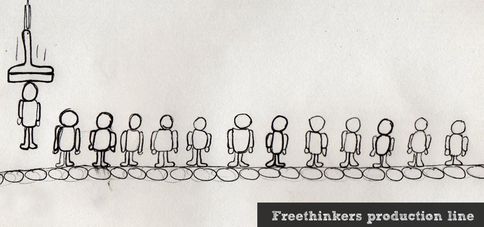Let’s be quite clear about the main issue here. Most funding for mental health research goes to high profile, expensive, medically oriented research on the biological substrates of mental health problems. Why is that? Well, while psychologists learn about both biological mechanisms and psychological mechanisms, medics simply don’t learn about psychological mechanisms - in fact they tend to have no knowledge whatsoever of the inferential methodologies that allow psychologists to develop models of psychological processes - but rather sadly, there is a majority of those medics on the panels of most funding bodies for mental health research.
Is this important? Yes it is, because, I'm quite happy to assert that most common mental health problems are acquired through perfectly normal psychological mechanisms that involve attention, decision-making, learning, memory and other general cognitive processes - so the mechanisms are not in any way abnormal - only the outcomes of the process are abnormal - so why do we waste research time and taxpayers money trying to look for abnormal neurological mechanisms or medically aberrant signatures of psychopathology when they probably do not exist?
As an experimental psychologist studying learning in nonhuman animals I learnt a lot about inferential experimental methodologies that allowed us to infer cognitive processes in any organism – human or nonhuman. These are the same types of methodologies that are used to understand most human cognitive processes - such as memory, attention, decision-making and learning. What many researchers from a medical background do not grasp is that scientific method allows us to infer the nature and structure of psychological mechanisms without having to know anything about the biological underpinnings of these mechanisms. In fact, whatever medical or biological research does subsequently to psychologists elaborating these mechanisms will merely be to substantiate the infrastructure of these mechanisms – and indeed, as radical as it may seem, it will be very little more than that.
Experimental psychopathologists should have the lead on all research questions to do with the aetiology of mental health problems. Their research is cognitive, experimental, inferential, provides evidence for the causal relationships that underlie the acquisition of mental health problems, and allows the development of testable models of mental health problems – and it’s a hell of a lot cheaper than most other medically driven approaches!
I have recently been heard to say that experimental psychopathology needs a manifesto to enable it to compete with other explanatory approaches to mental health problems such as neuroscience and genetics – well, it does. We need this manifesto to prevent other disciplinary lobbies from monopolizing funding and – most importantly – from hijacking the way we explain mental health problems. Most mental health problems develop out of perfectly natural psychological processes – not medical problems. Understanding those processes in the normal, inferential way that psychologists do research will provide the basis for good mental health research.







 RSS Feed
RSS Feed